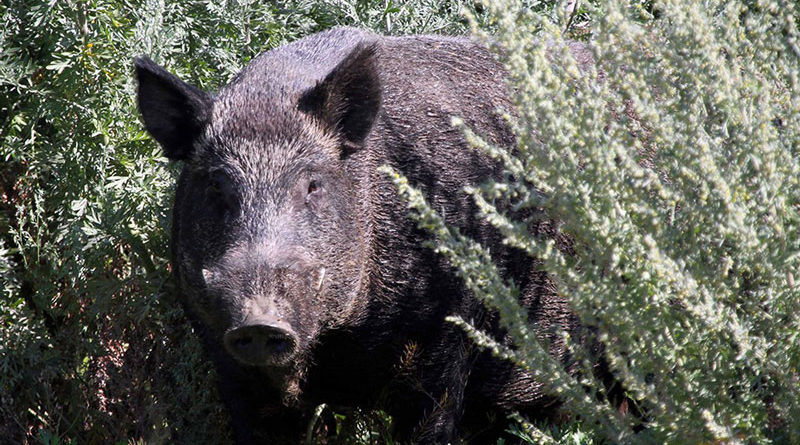Controlling feral pig populations
By John Watson Local Journalism Initiative Reporter
The Alberta Invasive Species Council (AISC) is partnering with a similar organization in Montana to raise awareness of feral pigs in Alberta.
Also known as “wild boar at large,” the AISC regards them as one of the most damaging invasive species in North America.
The program, dubbed “Squeal on Pigs,” is designed to raise awareness of the problem, asking Albertans to report sightings and evidence of wild boar at large so that they can be properly tracked, trapped and dealt with.
Perry Abramenko, pest program specialist with Alberta Agriculture and Forestry, said sightings and evidence of boars have occurred in 24 different rural municipalities across Alberta.
“Where we’re having most of our occurrences is west of Edmonton, primarily woodlands and Lac St. Anne County, but we’re getting sightings and occurrences in numerous other counties.”
Sightings and occurrences are more common in central and northern Alberta than in areas such as Wheatland County due do more accessibility both to dense cover as well as agriculture; however, there are occasional sightings in the area.
“The most recent one was actually in April this year and it was a single animal,” said Abramenko. “The way it was behaving and the way it was out in the daytime – I would suspect it was a domestic stray.
“There was only the one sighting and we haven’t had any reports of it since. The one prior to that was in October of 2018 and that one did turn out to be a domestic stray and it was actually shot.”
Megan Evans, executive director of AISC, said there are some very easy ways for anyone to help with the problem.
The “number one thing is to be aware that these things are present in Alberta and that they are a problem,” she explained.
Boars were originally brought into Alberta in the 1980s and ’90s when prices of more “standard” livestock such as beef and poultry were at a fluctuating decline. Risk assessments at the time determined there was no risk of the boars escaping, suggesting the local climate was too cold for them to survive on their own.
“I don’t know where their line of thinking was because (boars) evolved in a cold climate and they’re notorious for escaping,” said Abramenko. “We had wild boar farms for numerous years without any proper containment standards. There was no standard for proper fencing to make sure they didn’t escape and over the years, of course, some did and established themselves in a feral state.”
Initial population control efforts in Alberta placed bounties on wild boar at large, offering $50 per pair of ears that hunters could turn in. This was eventually redacted, as the effort was deemed to be making the problem worse because the boars learned to avoid hunters and changed their daily behaviours.
Wild boar at large sightings can be reported toll free to 310-FARM or to Wheatland County.

